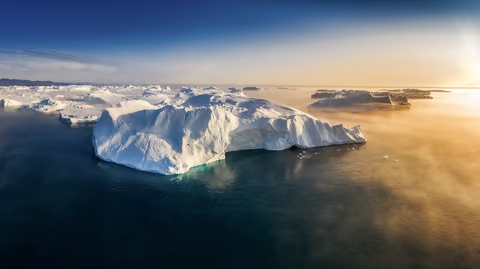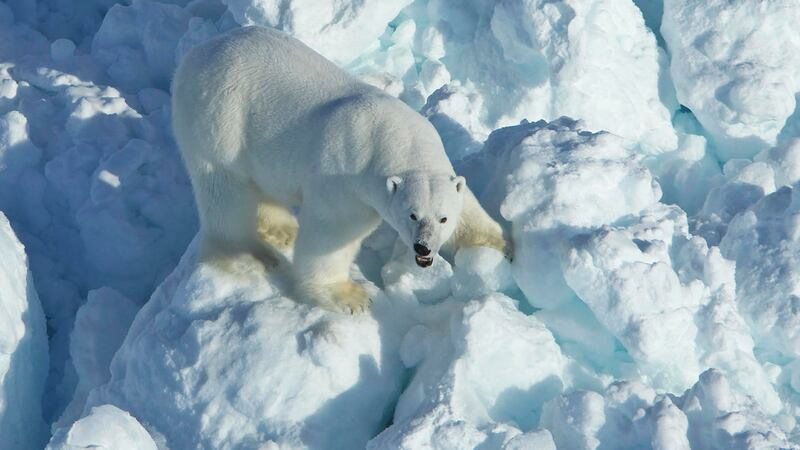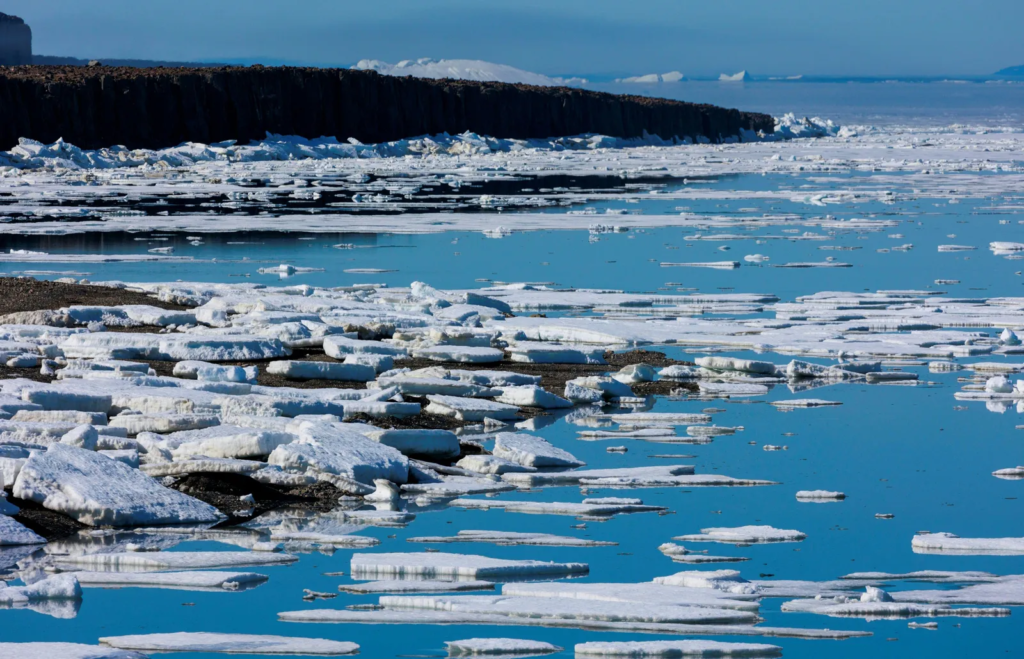The Arctic Ocean, a vital component of the Earth’s climate system, is on the verge of a historic and alarming milestone. A recent study published in Nature Communications suggests that the Arctic could experience its first ice-free day as early as late summer 2027.
This prediction is significantly earlier than previous estimates, which projected an ice-free Arctic around 2030. Using advanced computer models, scientists now foresee this event as inevitable and irreversible, with far-reaching consequences for ecosystems, global weather patterns, and human industries.
Understanding an Ice-Free Arctic: Definition and Significance
An ice-free Arctic refers to the sea ice area dropping to less than one million square kilometers, a dramatic reduction from its natural state. The Arctic Ocean spans over 16 million square kilometers, traditionally covered by a thick ice cap that expands during winter and shrinks in summer.
For centuries, this seasonal cycle has been a defining feature of the region. However, satellite data from the Scanning Multichannel Microwave Radiometer (SMMR), which has monitored sea ice since 1978, shows a disturbing trend: the Arctic has lost more than 12% of its sea ice per decade. This translates to approximately 80,000 square kilometers of ice disappearing each year—an area roughly the size of Austria.
Read : Svalbard: Place Which Experiences a Polar Night That Lasts For Several Weeks
The implications of an ice-free Arctic are profound. Sea ice plays a crucial role in regulating the Earth’s climate by reflecting sunlight back into space. Without it, the darker ocean absorbs more heat, accelerating global warming. This phenomenon, known as the albedo effect, means that even a single day without ice could mark a tipping point in the climate system.
Read : Antarctica Is Going to Be the Next Victim of Overtourism Amid Increasing Rise of Tourists
Scientists emphasize that this event is not just symbolic. “The first ice-free day in the Arctic won’t change things dramatically,” explains Alexandra Jahn, a climatologist from the University of Colorado Boulder.
“But it will show that we’ve fundamentally altered one of the defining characteristics of the natural environment in the Arctic Ocean, which is that it is covered by sea ice and snow year-round, through greenhouse gas emissions.”
Ecological and Environmental Consequences
The Arctic ecosystem is one of the most fragile and unique on the planet, supporting a diverse array of wildlife adapted to extreme conditions. The disappearance of sea ice threatens to disrupt this delicate balance.
Polar bears, the iconic symbols of the Arctic, rely on sea ice to hunt for seals. Without a stable ice platform, their survival is at risk. Similarly, smaller organisms like zooplankton, which form the base of the marine food chain, are highly sensitive to changes in temperature and ice cover.
The loss of sea ice also has cascading effects on marine mammals such as seals and whales. These animals depend on the ice for breeding and protection from predators.

As their habitats shrink, they face increased competition for food and higher mortality rates. In turn, indigenous communities that rely on Arctic wildlife for sustenance and cultural practices will see their way of life profoundly affected.
Beyond the Arctic, the environmental consequences of ice loss are global. The Arctic acts as a “refrigerator” for the planet, regulating temperatures and influencing weather patterns far beyond its borders.
Without its cooling effect, the risk of extreme weather events increases. Melting ice also contributes to rising sea levels, which pose a threat to coastal communities worldwide.
Human Impact and Economic Opportunities
While the ecological implications are dire, an ice-free Arctic also presents new opportunities and challenges for human activities. Warmer Arctic waters open up previously inaccessible areas for commercial exploitation.
Fishing industries could expand into regions once covered by ice, harvesting new marine populations. Deep-sea mining operations may target untapped mineral resources, raising concerns about environmental degradation and geopolitical competition.
One of the most significant implications is the potential for new shipping routes. The Northwest Passage, a sea route connecting the Atlantic and Pacific Oceans through the Arctic, could become a viable commercial corridor.

This shorter route would reduce travel time and fuel costs for freight companies, but it also raises the risk of accidents and environmental disasters in a fragile ecosystem. Increased shipping traffic could lead to oil spills and other pollutants, further endangering marine life.
Moreover, the warming Arctic is likely to contribute to more erratic and extreme weather events. Changes in wind and ocean current patterns could disrupt global climate systems, leading to more frequent storms, heatwaves, and droughts.
In March 2022, some areas of the Arctic experienced temperatures 10°C (50°F) above average, causing rapid ice melt near the North Pole. Such anomalies are likely to become more common, with far-reaching impacts on weather patterns across the globe.
Mitigation and Adaptation
Despite the grim outlook, scientists emphasize that there is still a window of opportunity to mitigate some of the impacts. Reducing greenhouse gas emissions remains the most effective way to slow down ice loss and preserve the Arctic ecosystem.
“Any reductions in emissions would help preserve sea ice,” says Jahn. While the first ice-free day may be inevitable, concerted global efforts could delay its onset and prevent more catastrophic outcomes.

International cooperation will be crucial in addressing the challenges posed by an ice-free Arctic. Policies that regulate industrial activities, protect marine habitats, and support indigenous communities must be prioritized. Additionally, investing in renewable energy and sustainable practices can help reduce the carbon footprint and slow down global warming.
The prediction of an ice-free Arctic day as early as 2027 serves as a stark reminder of the urgency of addressing climate change. This milestone is not just a symbolic event but a tipping point with profound ecological, environmental, and human implications.
By understanding the significance of this development and taking decisive action, there is still hope for preserving one of the planet’s most critical natural systems.

